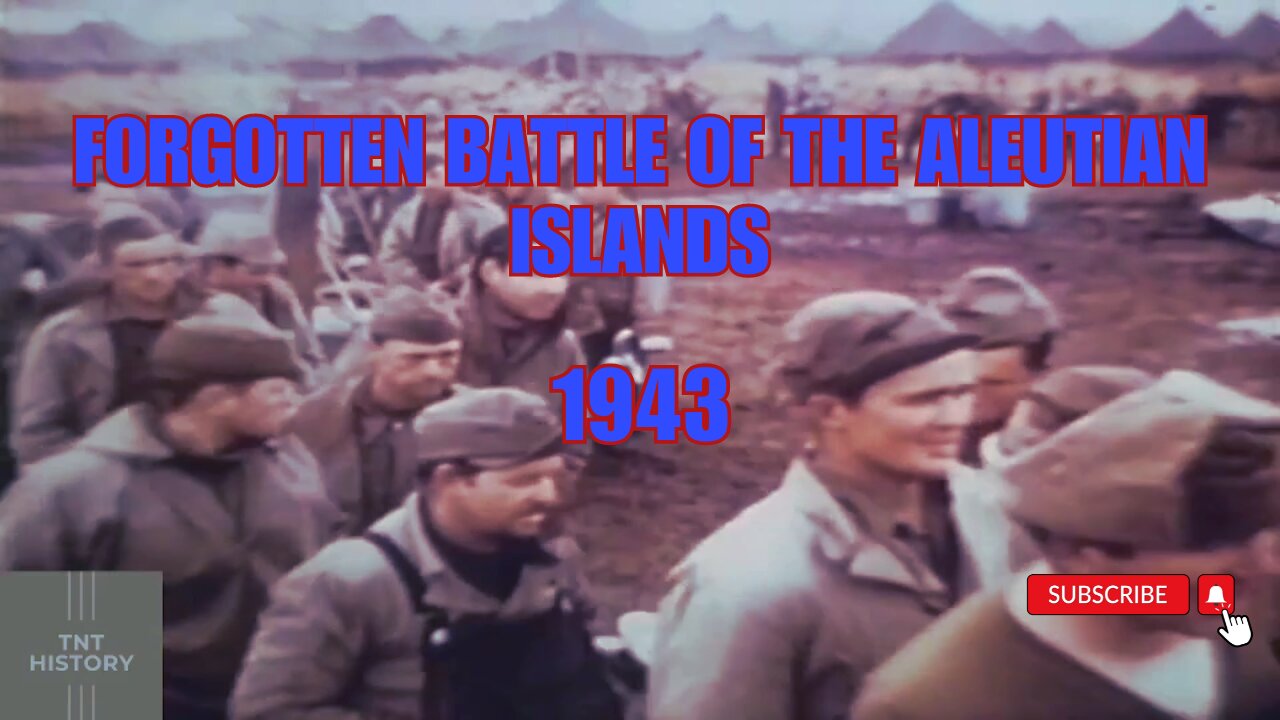Premium Only Content

John Huston's Odyssey: Filming the Aleutian Islands Campaign | WWII
►Twitter /X : https://twitter.com/history_tnt
In June 1942, a mere six months after the Japanese assault on Pearl Harbor, Japanese forces made a significant move by landing on Attu and Kiska, two of Alaska's Aleutian Islands. This marked the first instance of American territory being occupied since the War of 1812, causing widespread shock among Americans. The occupation of the remote Aleutian Islands was viewed as a potential stepping stone for a Japanese invasion of Alaska or even the continental United States.
The documentary film, originally titled 'Report from the Aleutians,' was produced by the U.S. Army Signal Corps in 1943, providing a cinematic account of the Aleutian Islands Campaign during World War II. Focused on U.S. military efforts on the Aleutian Island of Adak to reclaim the Japanese-occupied Kiska, the film is a captivating portrayal of historical events. Directed and narrated by Captain John Huston, who was serving in the U.S. Army at the time, the film earned an Academy Award nomination for Best Documentary.
Opening with a strategic map highlighting the Aleutian Islands' significance, co-narrator Walter Huston, John's father, explains their location—a chain extending 1,200 miles towards Siberia. The film details how the Japanese exploited the region's stormy conditions to land troops on the vulnerable island of Kiska.
Distinguishing itself from other World War II documentaries, this film minimizes combat footage, focusing instead on the daily lives of Army and Army Air Forces personnel on the remote Adak Island. John Huston deliberately includes scenes portraying the monotony of wartime soldier life, showcasing activities such as latrine digging, smoking, eating, and harbor patrols.
The documentary underscores Adak's robust air, ground, and naval defenses, illustrating its role as a base for air attacks on Japanese installations on nearby Kiska. The film's final segment features footage from an air raid mission over Japanese positions, where Huston himself faced peril. Particularly noteworthy are the scenes depicting low-level bombing runs by B-17 and B-24 bombers over Kiska.
Crucially, the film was shot and completed before the U.S. and Canadian troops invaded Kiska in August 1943, providing a unique snapshot of the situation before this pivotal military operation. Subscribe to our channel for more riveting insights into historical events that have shaped our world.
#JohnHustons #WWII #AleutianIslands
-
 1:05:44
1:05:44
Omar Elattar
9 months agoThe Digital Real Estate Expert: You're Being Lied To About Making Money Online!
293 -
 10:53
10:53
Nikko Ortiz
2 days agoWORST Clips On The Internet
74.3K26 -
 3:42:38
3:42:38
FreshandFit
11 hours agoShannon Sharpe Fired By ESPN! W or L?
53.3K55 -
 2:18:29
2:18:29
Badlands Media
13 hours agoDevolution Power Hour Ep. 376: Optics, Explosions & the War for the Narrative
138K37 -
 37:46
37:46
Stephen Gardner
11 hours ago🔥Trump NEVER expected THIS WIN as Schumer has EPIC MELTDOWN!
33.8K37 -
 2:02:41
2:02:41
Inverted World Live
7 hours agoNASA Engineer Says Trillions of Shape-Shifting, Cloaked Devices are Hidden on Earth| Ep. 83
27.6K10 -
 3:12:37
3:12:37
TimcastIRL
7 hours agoGOP Councilman DOUSED IN GAS, Set ON FIRE In Virginia, Suspect In Custody | Timcast IRL
237K88 -
 2:32:23
2:32:23
The Quartering
7 hours agoOn To The Big Bosses! Act 2 Of Expedition 33
55.2K6 -
 7:36:34
7:36:34
SpartakusLIVE
9 hours agoTiger Blood RESTOCKED and 30% off w/ code SPARTAKUS30
81K -
 24:58
24:58
Law&Crime
10 hours ago $2.57 earnedSecond Note Leaves Disturbing Clues in New York City Killings
33.5K12